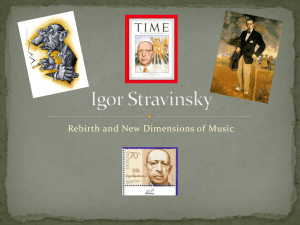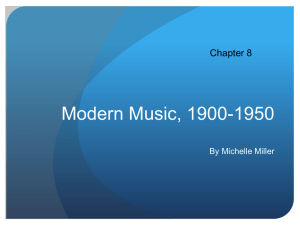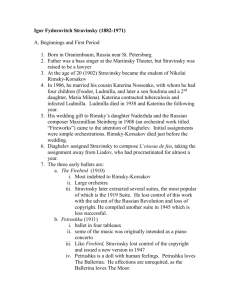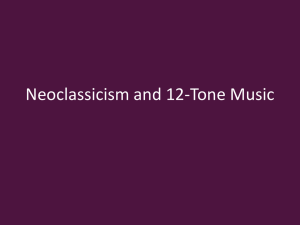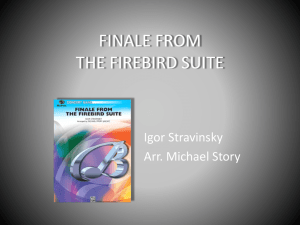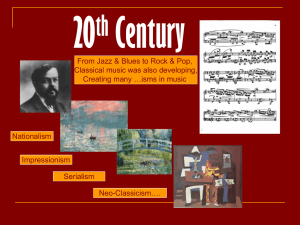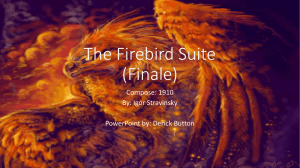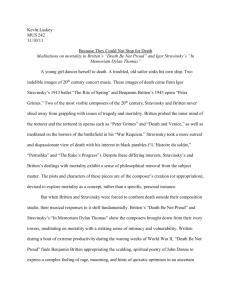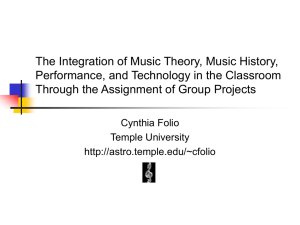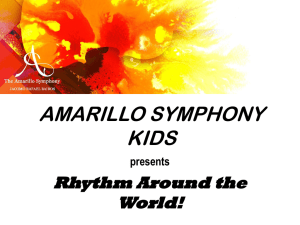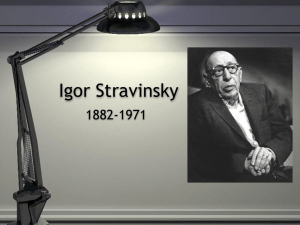Analytical Bibliography - Oxford University Press
advertisement
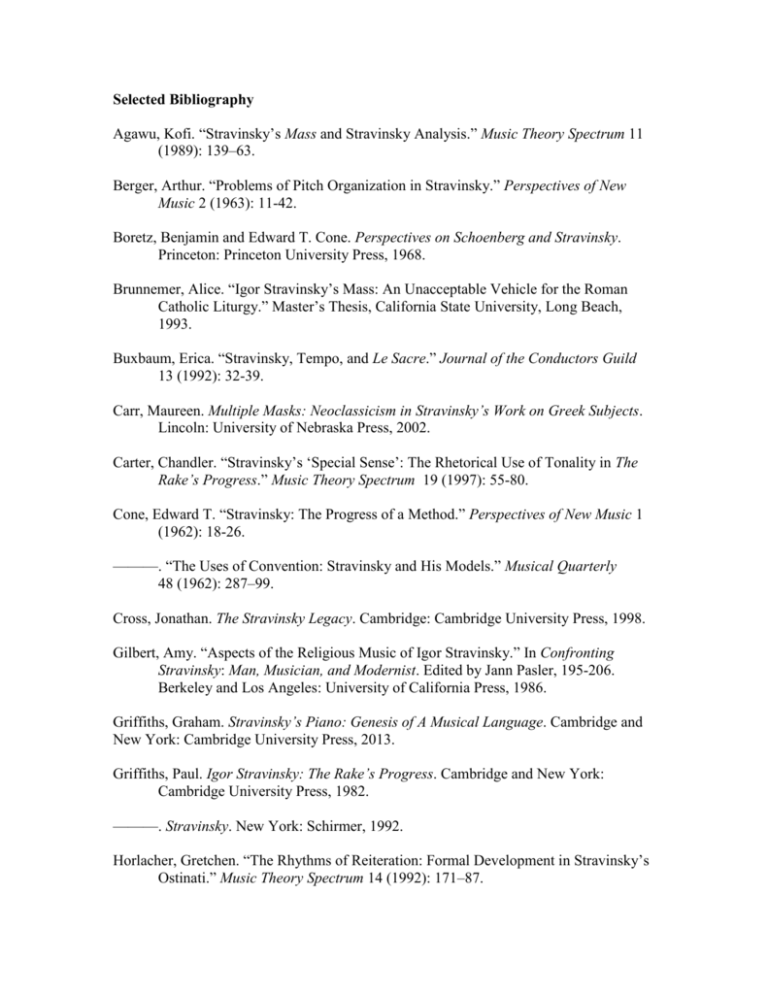
Selected Bibliography Agawu, Kofi. “Stravinsky’s Mass and Stravinsky Analysis.” Music Theory Spectrum 11 (1989): 139–63. Berger, Arthur. “Problems of Pitch Organization in Stravinsky.” Perspectives of New Music 2 (1963): 11-42. Boretz, Benjamin and Edward T. Cone. Perspectives on Schoenberg and Stravinsky. Princeton: Princeton University Press, 1968. Brunnemer, Alice. “Igor Stravinsky’s Mass: An Unacceptable Vehicle for the Roman Catholic Liturgy.” Master’s Thesis, California State University, Long Beach, 1993. Buxbaum, Erica. “Stravinsky, Tempo, and Le Sacre.” Journal of the Conductors Guild 13 (1992): 32-39. Carr, Maureen. Multiple Masks: Neoclassicism in Stravinsky’s Work on Greek Subjects. Lincoln: University of Nebraska Press, 2002. Carter, Chandler. “Stravinsky’s ‘Special Sense’: The Rhetorical Use of Tonality in The Rake’s Progress.” Music Theory Spectrum 19 (1997): 55-80. Cone, Edward T. “Stravinsky: The Progress of a Method.” Perspectives of New Music 1 (1962): 18-26. ———. “The Uses of Convention: Stravinsky and His Models.” Musical Quarterly 48 (1962): 287–99. Cross, Jonathan. The Stravinsky Legacy. Cambridge: Cambridge University Press, 1998. Gilbert, Amy. “Aspects of the Religious Music of Igor Stravinsky.” In Confronting Stravinsky: Man, Musician, and Modernist. Edited by Jann Pasler, 195-206. Berkeley and Los Angeles: University of California Press, 1986. Griffiths, Graham. Stravinsky’s Piano: Genesis of A Musical Language. Cambridge and New York: Cambridge University Press, 2013. Griffiths, Paul. Igor Stravinsky: The Rake’s Progress. Cambridge and New York: Cambridge University Press, 1982. ———. Stravinsky. New York: Schirmer, 1992. Horlacher, Gretchen. “The Rhythms of Reiteration: Formal Development in Stravinsky’s Ostinati.” Music Theory Spectrum 14 (1992): 171–87. ———.“Running in Place: Sketches and Superimposition in Stravinksy’s Music.” Music Theory Spectrum 23 (2001): 196-216. ———. Building Blocks: Repetition and Continuity in the Music of Stravinsky. New York: Oxford University Press, 2011. Hunter, Mary. “Igor and Tom: History and Destiny in The Rake’s Progress.” The Opera Quarterly 7/4 (1990): 38-52. Pasler, Jann, ed. Confronting Stravinsky. Berkeley and Los Angeles: University of California Press, 1986. Slim, H. Colin. “Lessons with Stravinsky: The Notebook of Earnest Andersson (18781943).” The Journal of the American Musicological Society 62/2 (2009): 323-412. Straus, Joseph. “Stravinsky’s ‘Tonal Axis.’” Journal of Music Theory 26 (1982): 261–90. ———. “A Principle of Voice Leading in the Music of Stravinsky.” Music Theory Spectrum 4 (1982): 106–24. ———. “The Progress of a Motive in Stravinsky’s The Rake’s Progress” The Journal of Musicology 9 (1991): 165-185. ———. Introduction to Post-Tonal Theory. New Jersey: Prentice Hall, 2000. ———. “Three Stravinsky Analyses: Petrushka, Scene 1 (to Rehearsal No. 8); The Rake’s Progress, Act III, Scene 3 (“In a foolish dream”); Requiem Canticles, “Exaudi,” Music Theory Online. 18/4 (2012). Taruskin, Richard. “Chez Petrouchka: Harmony and Tonality ‘chez’ Stravinsky.” 19th Century Music 10 (1987): 265–86. Trivers, Juliana. “Directed Motion in Stravinsky’s Mass.” Ph. D. diss., New York University, 2004. Tymoczko, Dmitri. “Stravinsky and the Octatonic, A Reconsideration.” Music Theory Spectrum 24 (2002): 68-102. Tymoczko, Dmitri and Pieter C. van den Toorn. “Colloquy—Stravinsky and the Octatonic: The Sounds of Stravinsky.” Music Theory Spectrum 25 (2003): 167202. Van den Toorn, Pieter C. The Music of Igor Stravinsky. New Haven: Yale University Press, 1983. White, Eric Walter. Stravinsky: The Composer and His Works. Berkeley and Los Angeles: University of California Press, 1979. Williams, B. M. “Time and Structure of Stravinsky’s Symphony in C.” Musical Quarterly 59 (1973): 355–69.
